Make Your Coffee Great Again: What are Natural and Honey Coffees?
Different methods of processing coffee can yield a wider range of flavors in your coffee cup – all of them equally delicious.
As the coffee cherries fully ripen, the farmers and their harvest workers will take to the fields a few times per week, hand-plucking only the ripest cherries from the branches. Large sacks are filled to capacity and – if the farmer belongs to a cooperative – those sacks are hauled away in a truck to a local drop-off station, where the quantity is counted and the farmer is given a credit from the cooperative. The coffee is periodically collected from these stations by cooperative workers and brought back to the mill (el beneficio, in Spanish) to be processed. This routine will last for approximately three months, typically from December to February in the Llano Bonito region of Tarrazú.
The cooperative in Llano Bonito from the road above
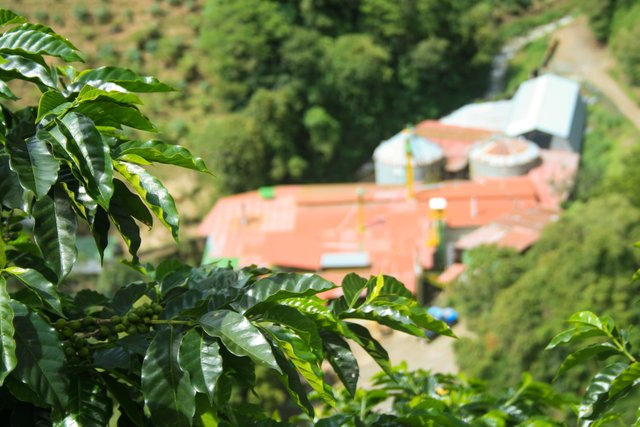
Some of the farmers belong to the cooperative and sell some of their harvest on their own. These farmers will typically have drying beds on their property and a handful of them even have a micro-mill where they can fully process the coffee themselves. Regardless of the capacity that the individual farmers and the cooperative may have, there are three different processing methods that are currently utilized in the region: washed, honey, and natural.
Each of these processing methods produces a different tasting profile for the final cup, but the initial quality of the coffee is what truly makes them stand out among the competition. Adding to our previous knowledge of the environment and the life cycle of the coffee plant, let’s take a look at the different types of processing.
Standard Washed Coffee
Unless you’ve been to a specialty coffee shop and purchased a bag of their exotic beans, the coffee that you’ve had throughout your life is most likely a washed coffee. This process is usually fully mechanized, so it’s less labor-intensive, it can manage larger volumes than the other methods, and the mill can be run at full capacity around the clock during the peak of the harvest season. For most cooperatives and larger estate farms, this is the processing method of choice.
Once the coffee is collected from the various drop-off stations and brought to the beneficio, it is transferred into large collection bins and the processing then begins. At the beneficio in Llano Bonito, the cherries are initially washed with clean water from two mountain streams that converge in the middle of the beneficio. The cherries are then sent to a row of pulping machines that strip the outer skin from them, leaving only the seed (bean) of the cherry and any parts of the mucilage that was not pulled from the seed. The seeds are then rubbed clean of the remaining mucilage, rinsed, and then machine-sorted into two groups based on size: first quality (primera calidad) and secondary quality (segunda calidad).
Pulping machines at the Llano Bonito cooperative
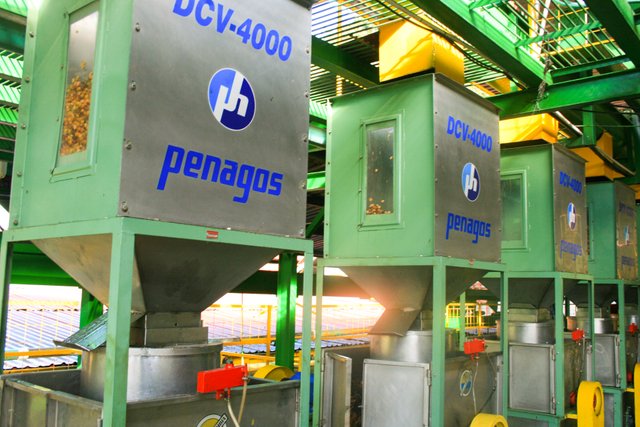
From here, the now washed and sorted coffee can either be sent to the drying oven (el horno), or to the sun beds (las camas). If there is an impending order that needs to be filled relatively quickly, then the coffee beans will be sent to el horno, which is mostly fueled by the dried coffee skins that have been stripped from the beans. Once the coffee reaches a moisture level around 11-12%, it is bagged for storage and shipment.
Drying beds at Santa Rosa 1900 in Tarrazú
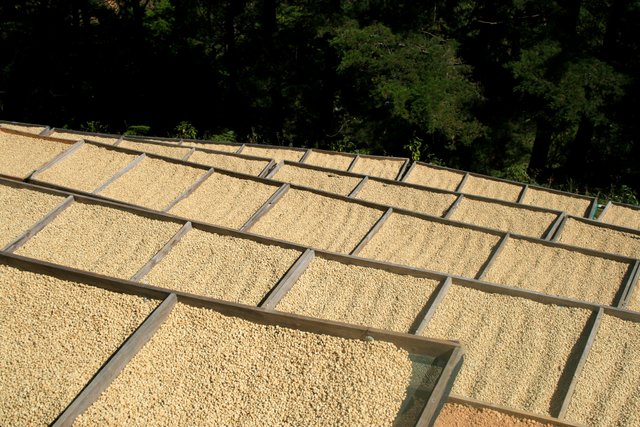
If the coffee beans are not needed for immediate delivery, many of them are sent to las camas to be sun-dried. While on these beds, the beans must be routinely monitored and raked over a period of several days to ensure consistent drying and the prevention of any mold or fungus. The beans will remain on las camas until the proper moisture content is reached.
The washed process will leave the coffee beans with a cupping profile that truly represents the characteristics of the growing region itself and both the quality of the plants and care of the farmers. If you like the distinct profile of a certain region, then a single-origin washed coffee would be your best choice.
Coffee Au Naturel
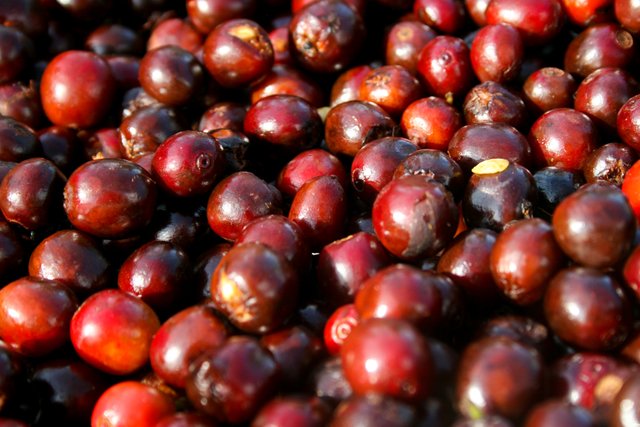
Gaining popularity in the coffee industry today, the natural processing method is the closest to nature, but requires a considerable amount of effort to ensure quality and consistency. If done properly, the coffee beans will acquire the sugary and fruity flavors of both the mucilage and outer skins of the coffee cherry, resulting in a heavier body and more sophisticated flavor profile.
Natural coffee begins with a proper harvest of the cherries. Only the ripe coffee cherries are hand-picked from the plants, then they’re rinsed and laid on raised drying beds. Over a period of three to five weeks, the coffee cherries are carefully raked and inspected throughout the day to ensure even drying and to weed out any that can be potentially damaging to the lot. Once the cherries are dried to the proper moisture content, they are taken from the beds and dry-milled to remove the outer skin, or husk.
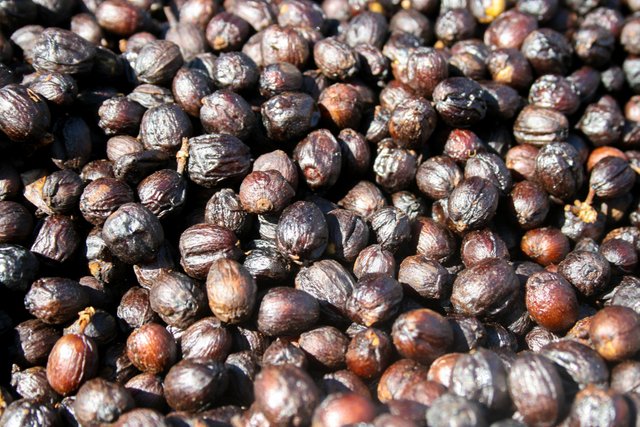
The natural process can be hit-or-miss, which makes it a risky endeavor for farmers who are not experienced in the methods. In Costa Rica, more farmers are experimenting with this process with some very promising results. With the quality of their arabica coffee already being considerably high, some of the farmers are receiving over four to five times the market price of premium coffee, making this a lucrative investment for them, despite the time and labor required to ensure top quality.
Honey Coffee (Café Miel)
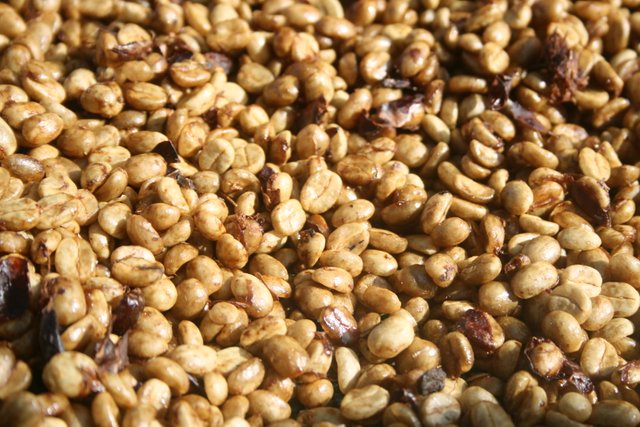
Giving us the best of both worlds – bridging the gap between washed and natural – the honey process represents the epitome of risk-reward. It is the most comprehensive method of the three and it has also spawned different categories of honey coffee based on color, such as yellow, red, black, white, and even golden honey. The “honey,” or miel, is actually the sweet and sticky mucilage that is found between the outer skin of the coffee cherry and the seed inside.
The process starts with the standard removal of the outer husk of the coffee cherry, but instead of cleaning the mucilage off of the beans, they are set to dry in the sun without rinsing. In the initial stages of drying, the beans must be raked a few times per hour to avoid sticking together, sticking to the bed, and to ensure even drying. Over the course of approximately two weeks – depending on the “color” of the honey coffee desired, which is also affected by weather conditions – the beans must be raked more often than the other methods. Upon reaching the desired moisture content, the beans are then removed from the beds, dry milled to remove the outer parchment of the coffee bean, and bagged for storage or shipment.
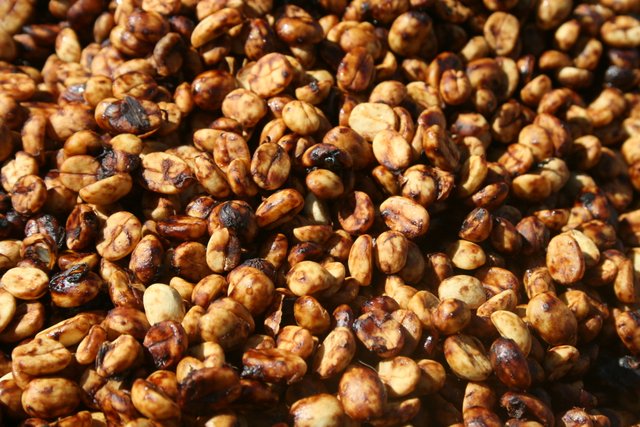
Honey coffees are generally sweeter than their washed counterparts. While retaining much of the characteristics of the coffee’s origin, they also absorb some of the fruity elements that are achieved from the natural method. Much of the acidity found in washed coffees is also retained, while more earthy undertones are simultaneously gained. When honey coffee is expertly processed, the result can be a good-bodied, sweet, fruity, silky-smooth cup of coffee that will tickle your taste buds!
A Personal Note
On my most recent trip to Costa Rica, I visited one of my farmer friends, Gerardo, on the western edge of the Llano Bonito region near the very small town of San Francisco. Gerardo has a rather large farm and he has been building his own mill on his property. He has many rows of drying beds where he tests his expertise of the honey and natural processing methods. Over the last several years, he has been producing some truly premium coffee, even hand-sorting it to achieve a near-100% premium lot.
My main Costa Rican contact and friend, plus his family and I, were invited to Gerardo’s farm on a Saturday morning to eat breakfast, visit his facilities, and even talk a little business. Gerardo had explained to us that he had sent about seven lots of his coffee to be graded for exporting. These lots consisted of several of his honey coffees and a couple of his washed and natural beans. The leftover beans from this testing were thrown together and he ground them up to drink at his farm while he finished the harvest season there.
Gerardo’s brand and some bananas from his farm
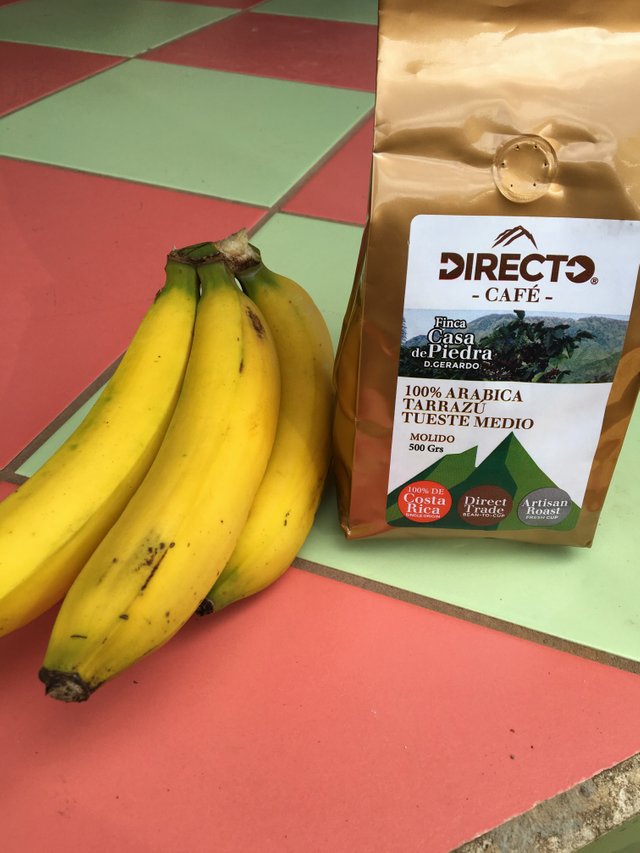
While we waited for breakfast to be ready, Gerardo brought the bag around to us so that we could smell this blend that he had just happened to create. I took one whiff…and declared it to be the best coffee I had ever smelled! A few minutes later, I was able to actually taste it. I took one sip…and declared it to be the best coffee I had ever tasted! What Gerardo was able to do with the leftovers of his experimental coffee has so far been unmatched by all of the so-called “expert” coffee roasters and “craft coffee artists” that I’ve encountered. I told him that, if he could replicate that blend, I could make him a very rich man!
I was fortunate enough to be able to leave his farm that day with my very own bag, which I thoroughly enjoyed with my wife after returning home from my trip. And she agreed with my assessment of his coffee.
So, the moral of my little anecdote is this: Don’t be fooled by buzzwords and marketing gimmicks. Great coffee is made on the farm, not in a roaster. If the beans are not the best quality, there’s no amount of blending or roasting that will give the coffee a premium taste. Know what you’re drinking. If you’re not sure, then ask. If you can’t get an honest answer, then it might be better for you to seek a better source for your coffee.
Prior installments in this series:
Make Your Coffee Great Again!
Make Your Coffee Great Again: The Source Rewards
Make Your Coffee Great Again: Environment is Critical
Make Your Coffee Great Again: Flowers, Cherries, and Seeds - Oh, My!
Very nice. I knew of the first two methods, but not the honey. Sounds awesome.
How does this sort of processing affect the roast? Does anything need to be done differently?
No, nothing different. The flavors are already imparted into the beans during the drying process. The beans are then dry-milled to remove the outer parchment before being stored and shipped, so there won't be anything stuck on the beans that would affect the roast or gunk up a roaster. Of course, you won't want to dark roast this coffee - or any premium coffee, for that matter.
I always shoot for a minute after first crack. But the Poppery isn't very precise, so I sometimes get them too hot. It's harder this time of year because of the ambient temperatures.
When we lived in Michigan it was the opposite. I had to remove the little thermoswitch thingy from the popper so it wouldn't shut off, or it would just bake the beans because it wouldn't get them hot enough. Now I struggle because I sometimes get second crack almost on top of first crack. And blends are just plain confusing when that's happening. :)
Looking forward to more of your posts.
Great pictures! -upvoted
Thanks!
I will wait a pack so I can test it :P
Hopefully soon. Need to work out some shipping logistics and web-related stuff. I'll let everyone know when the products will be ready.
I'd never heard of honey coffee before. It sounds divine!
When perfected, it tastes just like it sounds! Stick with me and I might be able to get you a bag soon enough.
Hmm, never had an honey coffee before. Living here in Panama means I have many amazing options. Costa Rica has many great growers. You should also check out Boquete, Panama.
One of these days I'll take a trip to Panama. Right now, all of my time is consumed by working out plans with my partner in Costa Rica. When I'm there, we just go see farmers, discuss options for various projects, and hammer out details. Now I'm developing the cacao relationships, so when I'm there, I have to split the time between coffee farmers and cacao farmers. I need another one of me.
The honey coffee is really growing in Costa Rica. I think Brazil has a fairly well-developed honey coffee market, but the CR farmers are really taking it to another level with the varieties that they produce. Maybe you need to take a quick road trip and check it out. If you want, I can get you a list of beneficios that are putting out the best coffee in the country according to the Cup of Excellence competition.
I like how much you passionate to coffee and your dream!
great post, thank you!
You're welcome! Thanks for reading and for your support!
My mother in law puts honey as a sweetner in her expresso. I should try it out one of these days, but I usually put in a shot of liquor.
Liquor works too! What do you put in it? Whiskey, Irish cream, Kahlúa?
I mainly put in Cognac, sometimes Rum, you can also use Sambuca, even Tequila works.
Sambuca would be interesting. Tequila - now you're talking! I'll have to try that. Maybe I'll whip up some cold brew and give it a whirl.
Great pictures and very interesting all the steps that go into a cup of coffee.